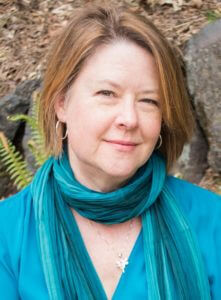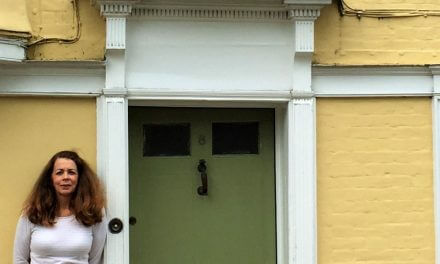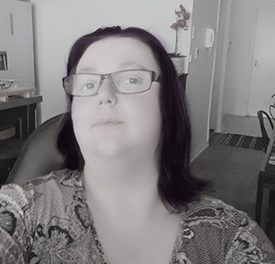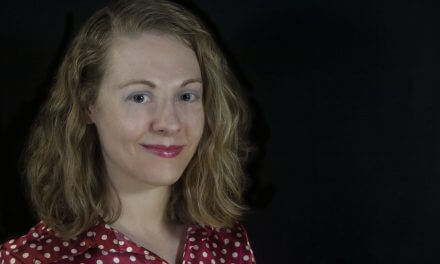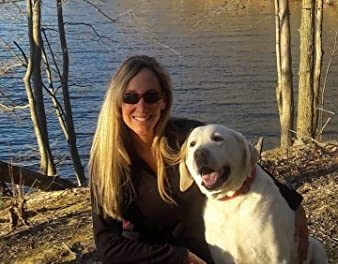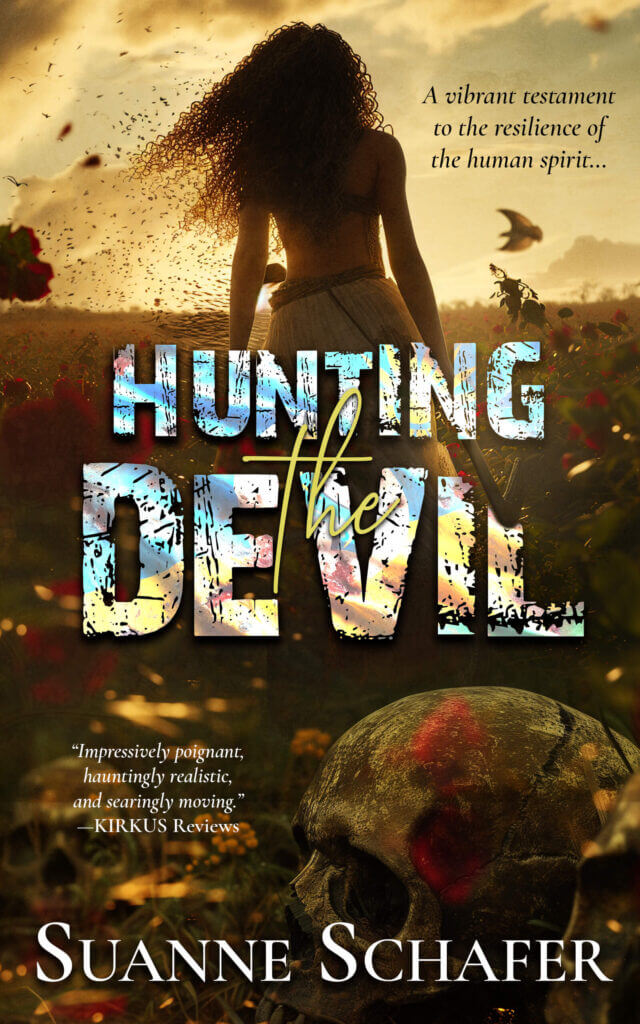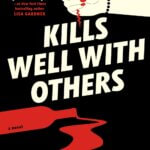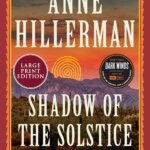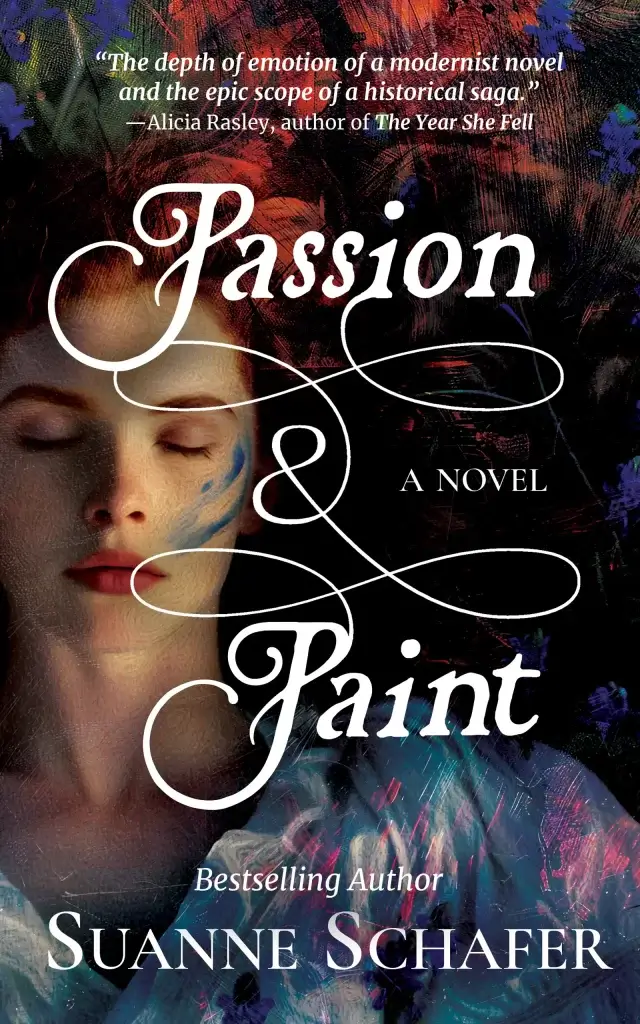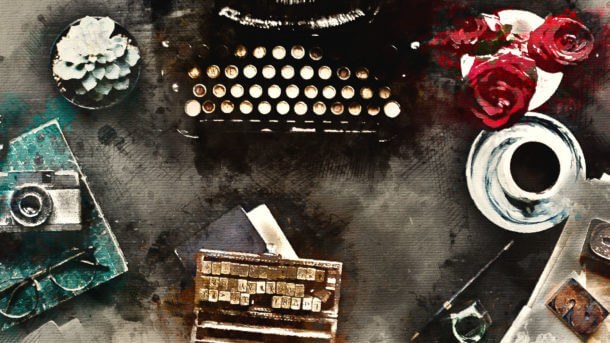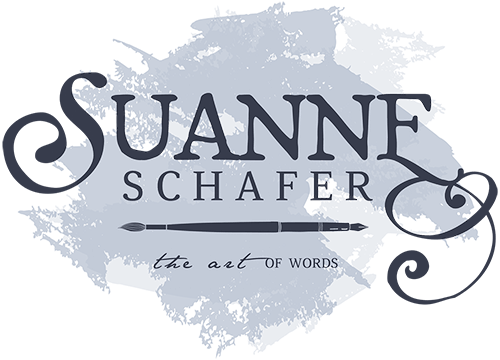Sadira Stone has been spinning steamy tales in her head since her first kiss. But it wasn’t until her 50s that she tried her hand at writing one. Now she’s a happy citizen of Romancelandia, penning contemporary romance and cozy mysteries from her home in Washington State. When not writing, which is seldom, she explores the Pacific Northwest with her charming husband, enjoys the local music scene, plays guitar badly, and gobbles all the books. Today I’m chatting with her about romance, books, life in general.
Tell us how you came to be a writer, Sadira.
Pretty typical, I suppose. I was book-crazy from a very young age and blessed with parents who encouraged that passion. I’d spin elaborate fan-fiction tales in my school notebooks, complete with illustrations. Captain Kirk inspired so many romantic plots, and David Cassidy, and…
Later, I tried my hand at writing detective stories, then horror, and now romance. Writing fiction started as a fun, therapeutic hobby that became my passion.
When I read other authors’ biographies, I worry mine is dishwater-dull. How do you feel about your life story? Have you ever been tempted to jazz yours up?
Not anymore. Being ordinary is actually a fear of mine, but I’ve collected enough experience to shore up my self-esteem. I dabbled in acting, then joined the army, which took me overseas and led to my 30-year ex-pat phase. My teaching career was pretty ordinary, but it played out in Germany, which gave me the chance to travel all over Europe. And I learned to belly dance quite well. It’s hard to feel dull when you’re belly dancing.
Have you always been driven to write? Or did you begin writing in response to a particular stimulus?
Funny story: I was a rookie high school teacher in my late twenties. A large, emotionally unstable boy threw a screaming fit in my class, leaving me rattled and scared. After school, I stayed at my desk and pounded out the beginning of a short story in which I killed him with a heavy hole-puncher. Only on paper, mind you, and purely in self-defense. My fictional heroine hid the bloody corpse in a locker, but when she returned to dispose of the evidence, someone had moved the body! I went on to complete three not-yet-published crime novels. Later, writing tales of reinvention and retribution helped me through the end of a miserable marriage. It’s so satisfying to create the endings I’d like to see in real life.
What are you working on at the moment?
I’m just getting started on the third novel in the Book Nirvana series, which centers around an indie bookshop in Eugene, Oregon. This couple are my youngest yet: he’s in his late twenties, and she’s still an undergrad. Elmer, the hero, made a surprise appearance in book two, and was so charming and complex that he required his own story. He’s a tattooed, ginger-bearded ceramics artist who works in a brewery. Margot, the heroine, is a favorite secondary character from books one and two. A feisty little sprite, she’s determined to explore all her options, while Elmer’s ready to build a family. Their fierce attraction tugs them together, until they find themselves in competition for an artist’s grant that could make their careers.
What is your most recent book? In twenty-five words or less, tell me why a reader should start your book next.
Through the Red Door. Seduced by her erotica collection, can a suave professor persuade a widowed bookseller to open her heart?
Do you generally write in one genre? If so, what is it? And what can readers expect from one of your books?
I’ve written some horror tales and cozy mysteries under my own name. As Sadira Stone, I write steamy-but-not-kinky contemporary romance. In my view, sexual attraction is an important part of the falling in love process. I try to balance passion, emotion, and self-discovery in my stories, which always include an element of reinvention and/or second chances. It’s never too late to fall in love!
Regardless of genre, what are the elements that you think make a great novel? Do you consciously ensure all of these are in place?
As a reader, I need to root for the protagonist. Her decisions need to make sense in the context of her world and her experience. She needs to be struggling for something that matters beyond her own four walls. She needs to be a grown-up with depth. Of course, she’ll make mistakes—we all do—but she can’t be a ninny. I strive to create heroines worth rooting for and heroes worth loving, people you might actually meet in the real world. Because real people are fascinating!
Where is your book set? How did you decide on the setting? When is it set?
I sort of picked Eugene, Oregon, out of a hat. Several people told me what a great college town it is, but I’d never visited when I started writing the Book Nirvana series. Much research and a few visits later, I’m completely charmed by that funky, artistic, outdoorsy city on the Willamette River.
Mark Rubenstein says, “Without chaos, there’s very little story to tell.” What is the source of chaos—or the central conflict—in your story?
Clara’s body is ready to love again, but the thought of dating feels like a betrayal to Jared, her late husband. In dreams and signs, Jared tells her it’s time to move on. In one day, she meets two potential suitors: one suave and seductive, one comfortable and kind. She edges toward choosing one of them, only to discover a scandal in his past that destroys her trust.
Let’s change directions a bit. What advice would you give aspiring writers?
Read widely in your genre. Read craft books. Take a few classes. Write lots, knowing your first attempts are probably not going to sell. A new painter wouldn’t expect to sell her first canvas, would she? Give yourself time and loving self-acceptance as you learn your skill set. Find a critique group. Meet regularly with other writers; they’re incredibly generous and have much to teach you.
Are there any books on writing you would recommend?
Yes! Right now I’m working through Damon Suede’s Verbalize: Bring Stories to Life & Life to Stories, a true game-changer. For romance writers, I recommend Leigh Michaels’s On Writing Romance: How to Craft a Novel that Sells, and Susie Bright’s How to Write a Dirty Story: Reading, Writing, and Publishing Erotica. And before submitting or publishing your work, have a look at Renni Browne and Dave King’s Self-Editing for Fiction Writers: How to Edit Yourself into Print.

I’ve used the Browne-King book frequently; it’s great. Another subject change: What do you find most difficult about writing characters of the opposite sex?
So far, I haven’t found that difficult. Guys are people, after all. It helps to have male critique partners. Mine are terrific, and they’ve called out a few times: “No guy would actually say/do that.” Some romance writers say, “I’m not writing a real man, I’m writing a romance hero.” I prefer my heroes to be believable.
Can a beta male be a great hero?
Yes! I can’t abide bossy men; if I write one, he’s the villain, not the hero. A hero should be supportive, determined to win the heroine’s love, but accepting of her boundaries. He earns her love rather than bulldozing his way into her bed and her heart.
Cindy Gallop says that hardcore pornography has distorted the way a generation of young men think about sex. On the other hand, romances have given women hopes of finding men who like to perform cunnilingus and always allow the woman to orgasm first. Do you see any point in the future where these two ways of looking at the sexual experience will ever meet?
Absolutely! If women have a clear vision of what a healthy, loving relationship looks like, including the sexual part, they can and will expect that in real life. It’s not easy, especially when we’re young, but women have to teach their male partners how to please them. In a recent workshop, Damon Suede said, “I don’t teach women to expect what they can’t have, I teach them to ask for what they deserve.”
********************

Through the Red Door is available from:
Amazon | B&N | Wild Rose Press
********************
An excerpt from Through the Red Door:
Harry got to work on the window display, leaving Clara to concentrate on paperwork and the handful of customers who wandered in. When Margot arrived a little after two, Clara retreated to her office, really just a small desk behind a carved wooden screen. She was ready for a coffee refill when Margot knocked on the screen and peeked around the corner, her eyes twinkling.
“Hey, Clara, there’s a dude here who wants to look in the back room.” She waggled her thrice-pierced eyebrows. “You wanna check him out, or should I just give him the key?”
“What’s he like?”
Margot rolled her eyes heavenward. “He’s gorgeous!”
“Well then, guess I’d better check him out.” After all, who knew what sort of fellow merited that label in Margot’s world.
She’s right. He’s gorgeous.
He leaned one elbow the counter, examining the fliers posted there, so Clara’s first view was the firm curve of his behind, cupped by soft wool slacks. His crisp white dress shirt stretched across broad, muscular shoulders, and his rolled-up sleeves revealed powerful forearms dusted with sleek, dark hair. At her approach, he straightened to greet her, a half-smile on his full lips.
She gulped, and her hand strayed to the locket nestled between her breasts. Dark eyebrows arched over his espresso brown eyes. His nose was straight and sharp, with flaring nostrils, and his dark olive complexion whispered of strong sunlight. Mediterranean, or Caribbean? A shadow of beard dusted his jaw, and, when he tilted his head to smile down at her, one perfect black curl flopped onto his forehead. The hand he extended was broad and warm and surprisingly gentle. She gazed into his sparkling eyes, stepped in closer—then jolted backward, startled by her own reaction. Not since Jared had she felt so compelled to touch a man.
********************
You can follow Sadira on social media at:
